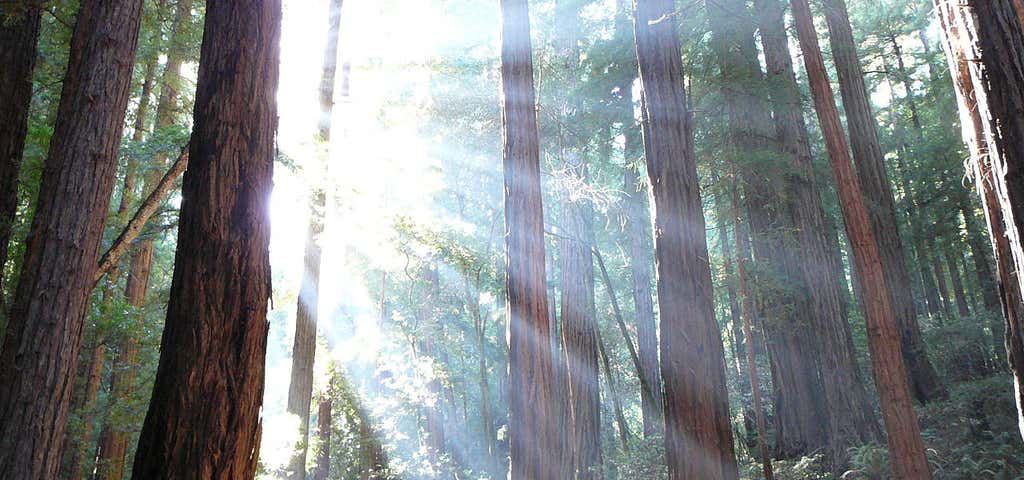Few causes elicit such passion as saving the environment. You don't have to be a gung-ho Greenpeacer to do your part to keep the Earth healthy! Next time you're feeling less than excited about carpooling or going out of your way to find a recycling bin, keep in mind these endangered American natural wonders that we want to preserve for our kids, and their kids, and everyone possible! If you haven't seen them all, do your part to protect them until you can check them all off your bucket list, because some are in immediate danger of disappearing. I'll let the natural beauty speak for itself!
Deep inside Olympic National Park is a delicate ecosystem; a temperate rainforest, where the ancient trees are dripping with delicate mosses. This is the best place to get a sense for what America might look like if it had remained untouched by development. There aren't many experiences quite like feeling like you're deep in the forest, miles away from civilization, so take advantage of this hike.
This peaceful lake is a reminder of the power of Mother Nature; it's formed from a volcanic crater. As one of the world's deepest lakes, and one filled with rainwater and snowmelt, it's crystal clear and absolutely stunning. Hop on a trolley tour around Rim Drive... though the vehicles have a vintage look to them, they're actually natural gas vehicles, which are a cleaner alternative to fossil fuel vehicles.
Muir Woods National Monument
Muir Woods has a tradition of preservation. Named for famed naturalist and National Parks advocate John Muir, the monument was purchased by a friend of his named William Kent, a US Congressman. Kent planned to protect the canyon from loggers, who decimated the nation's redwood and sequoia forests, but his plan was thrown into jeopardy when a water company threatened to dam a creek and flood the land. He gave the land to the Federal government, and President Theodore Roosevelt declared it a National Monument, saving it from its watery fate. It's home to massive coastal redwood trees, perfect year-round weather, and some breathtaking hikes.
The desert may seem like a harsh landscape, but it's just as delicate an ecosystem as anything else. Anza-Borrego Desert State Park is a prime example. Early each spring, it explodes in color as wildflowers cover most of the park. It's one of the largest parks in California and boasts hundreds of miles of dirt road, cacti, groves of palm trees, and some pretty unique wildlife.
Saguaro National Park
Saguaro cacti are a popular symbol of the Southwest, but they're actually sort of rare; they can only grow in specific parts of Arizona, California, and Mexico. Luckily, we have Saguaro National Park to preserve some of the areas where they can thrive. It's still a desert, so remember to bring tons of water and sunblock, and try to hike in the morning, if you can.
Jacob's Well Natural Area
Many of the swimming holes and springs in Texas have been developed and commercialized, which means they're crowded and a less natural experience. Jacob's Well is still a little more off the beaten path and is a more organic experience. It's also the longest underwater cave in the state, which makes it an extra-special natural gem!
Tyndall Glacier
Glaciers are one natural feature that we know are disappearing, and disappearing fast. Rocky Mountain National Park is home to more than a few that are receding, and one of the most symbolic ones to visit is Tyndall Glacier. It's named for scientist/Alpine mountaineer John Tyndall, who identified carbon dioxide as a heat-trapping greenhouse gas. You can climb the glacier, or photograph the famously snowy landscape.
Morning Glory Pool is an example of how human influence on a natural feature can affect it. For years, the pool was a stunning shade of blue... but as more people came to visit Yellowstone, they did what tourists do: throw trash into the geothermal spring. As the trash got embedded in the sides and vents, the circulation slowed and the temperature cooled. As a result, the orange and yellow bacteria that could once only survive at the edges of the pool began to spread to the middle, changing the spring's appearance. It's now more roped off and has interpretive signs explaining the phenomena, but clearing the trash out of the vents has only had mixed results at best.
Cracker Lake
Speaking of colorful bodies of water, Cracker Lake is another gem. The unusual opaque turquoise color of the water here is a result of glacial melt and rock flour silt. It's reached by a 13-mile round trip hike, which means that it's relatively free of crowds.
Badlands National Park
The odd geological formations and sweeping prairies of Badlands National Park are one of the country's most unique and underrated landscapes. Rich in ancient fossils, home to creates like bison and prairie dogs, and revered by Native Americans, this part of the country's heartlands is something that everyone should experience.
Mushroom Rock State Park
Another geologic oddity can be seen at Mushroom Rocks State Park. Stone hoodoos, spires, buttes, and more are actually kind of fragile, so don't make like the Native Americans who carved notes and petroglyphs into the rock here! Other cool formations, like Devil's Tower and Goblin Valley State Park, dot the country, so keep your eyes out for unique rocks carved by Mother Nature herself.
Sleeping Bear Dunes National Lakeshore
America's lakes are especially popular spots to visit. Fishing, boating, swimming, playing on beaches, and more can be enjoyed at spots like Lake Michigan. In Michigan especially, you can find massive sand dunes like Sleeping Bear Dunes, along lakeshores. They're incredibly fun to run up, slide down, and admire views from atop. Seeing the pristine sand and water makes the experience that much more enjoyable.
Cahokia Mounds State Historic Site
We also should work to preserve what remains of civilizations past. Cahokia Mounds State Historic Site is the former capital of an ancient civilization. Between 700 and 1400 AD, inhabitants built a bustling community, complete with the large earthen mounds that remain today. In 1250 AD, it was bigger than London was at the time! Of course, keeping the man-made earthworks and artifacts found here in good condition is crucial to preserving the site, and as you explore the remains of the city and the interpretive exhibits here, you'll learn tons of interesting things about the past.
Cuyahoga Valley National Park
Cuyahoga Valley National Park is a shining example of what we can do to fix places that have been mistreated. Parts of this National Park were illegally used as a toxic dump, and even though cleanup took awhile (and fishing and swimming in the water are still discouraged) things are starting to return to normal here. Plus, the park preserves small towns and historic farms, which keep this spot, super close to Cleveland, feeling like it's from another time.
Cathedral Caverns State Park
Even caves are special natural gems we can work to preserve. Cathedral Caverns is an example of an accessible show cave that has tons of incredible features. Stalagmites, frozen waterfalls, underground rivers, and more can be seen as you take a guided tour through the cave. You might even see a bat or two!
Another natural feature in imminent danger of disappearing forever is Earth's coral reefs. Even though Biscayne National Park mostly covers ocean, it's meant to protect reefs and islands in the bay. Snorkel, scuba dive, or take a boat tour to see the gorgeous plant and wildlife here... just remember not to touch anything underwater, as it can damage or harm the coral!
Three Sisters Spring is a spring-fed inlet off the Crystal River that's most well-known for being a haven for manatees seeking warmer water during the winter. Naturally, these vulnerable beasts need to be protected, and the natural spring that feeds the stream is pretty special as well. During the winter, swimming, snorkeling, and kayaking here are prohibited, but during spring and summer, all of that is allowed. It's a beautiful, lush slice of Florida that anyone visiting ought to see.
Cape Cod National Seashore
Beaches are another feature we can actively work to protect. Otherwise, places like the Cape Cod National Seashore wouldn't be as incredibly scenic as they are. From the stunning sunsets to the silky sand to the refreshing ocean water, this is a spot that is inspiring to many.
Thunder Hole
But to really feel how powerful the ocean can be, make your way to Maine's Acadia National Park. The rocky shoreline boasts Thunder Hole, an inlet with a cavern that, when the tide rolls in and waves crash through the channel, makes an incredible booming sound. You won't find a more impressive demonstration of strength by Mother Nature than this!
America's incredibly diverse natural features are each more stunning than the last. They're also too numerous to count... but if we don't protect and preserve these gems, we might lose them forever.
IntoTheWild
Earth and sky, woods and fields, lakes and rivers, the mountain and the sea, are excellent schoolmasters, and teach some of us more than we can ever learn from books. -John Lubbock
Explore More Trip Guides
The real places that inspired Gilmore Girls' Stars Hollow
- 12 Places
- 02:03
- 69 mi
California SR25: The Airline Highway
- 14 Places
- 05:41
- 213 mi





















